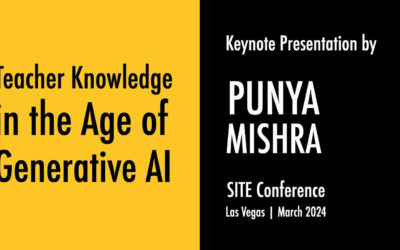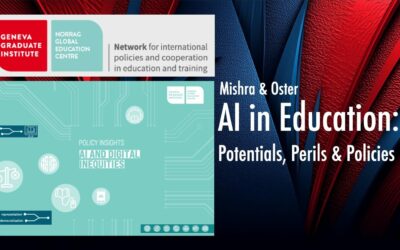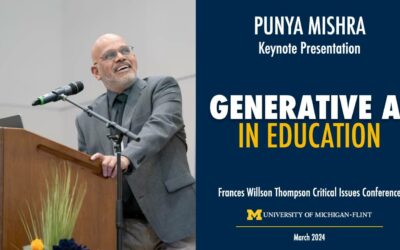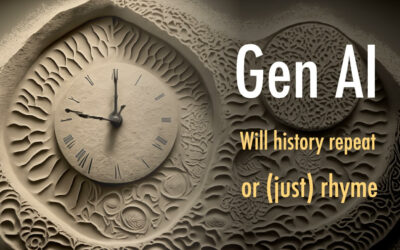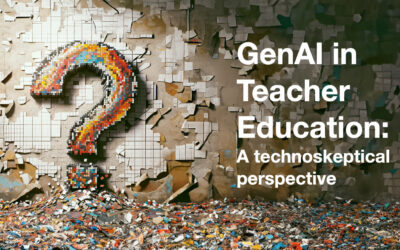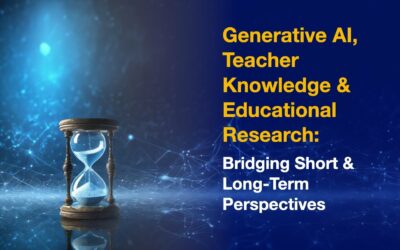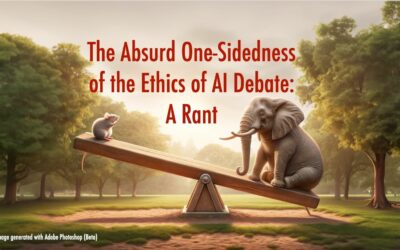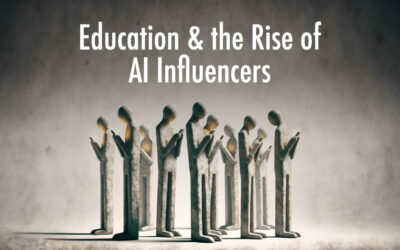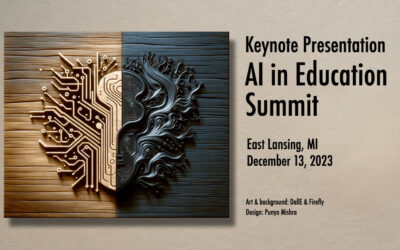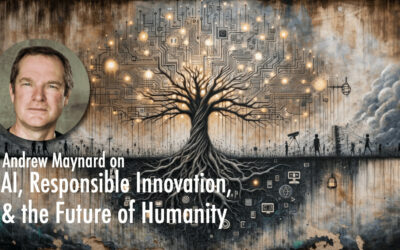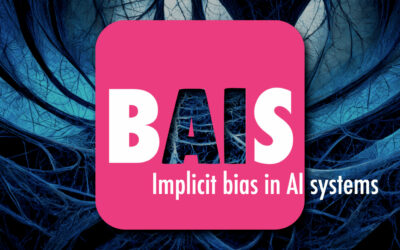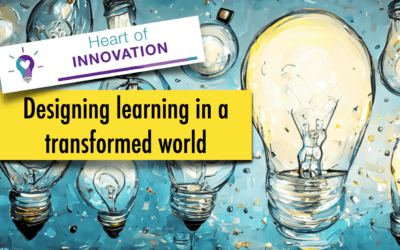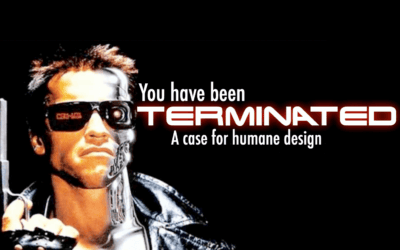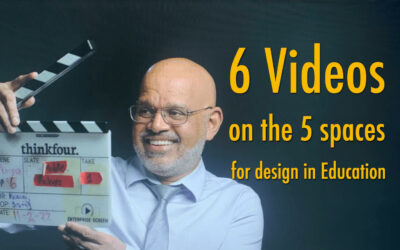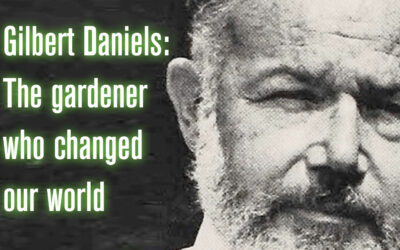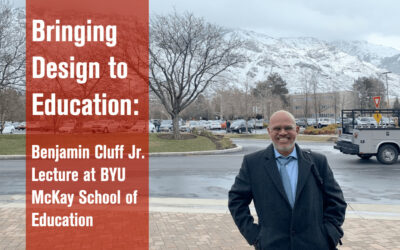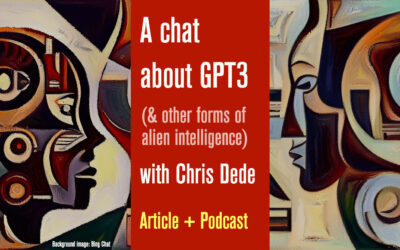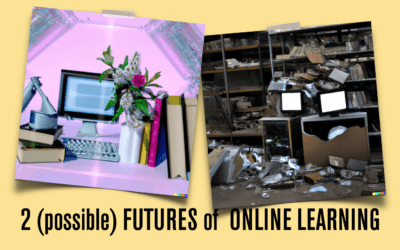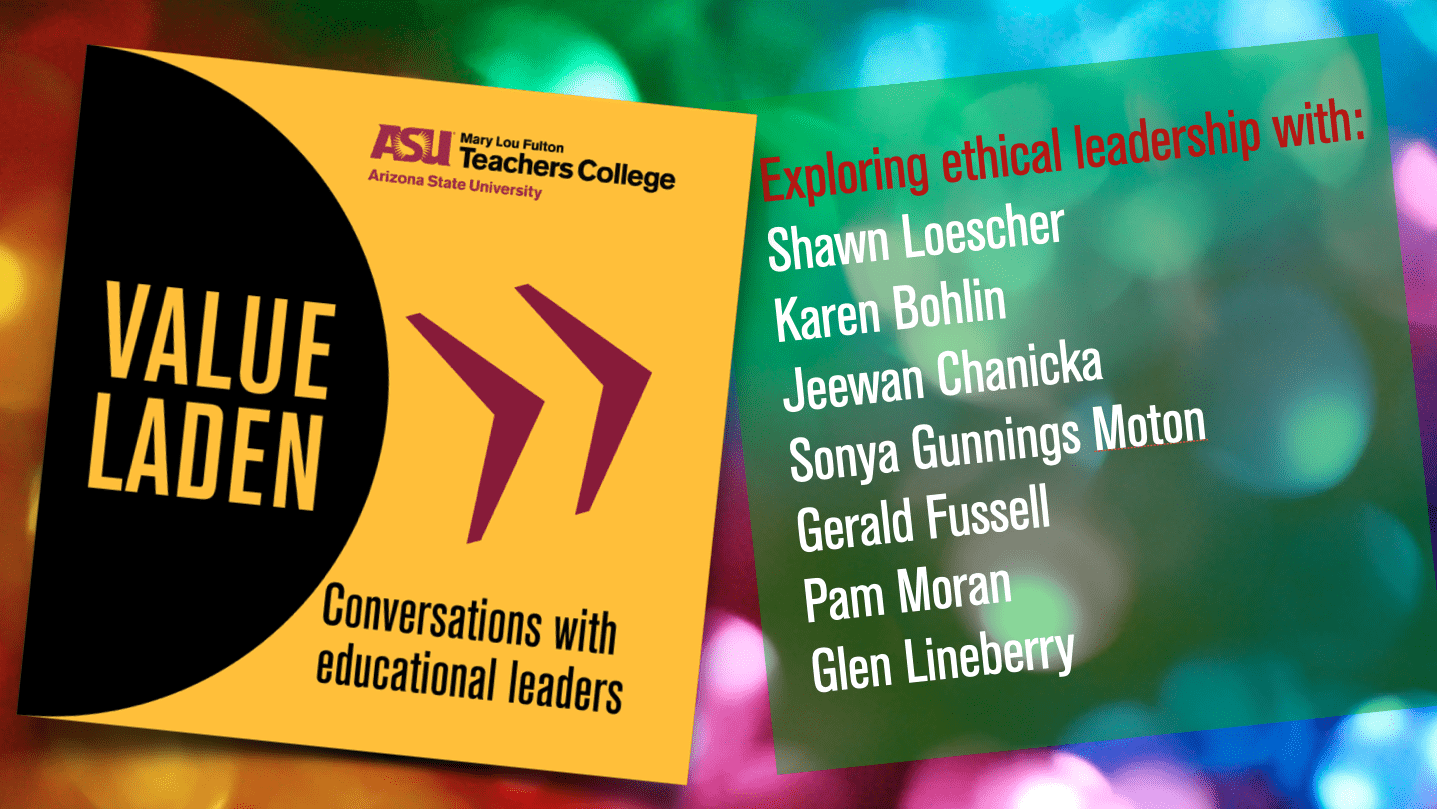16 years ago, Matt Koehler and I were invited to present a Keynote at the Society for Information Technology in Teacher Education (SITE) conference. That keynote changed our lives (link to YouTube video). I was invited back again this year for the same. A lot has...
SITE 2024: A recap
The Society for Information Technology in Teacher Education (SITE) conference has been an integral part of my professional journey for over two decades. My first presentation at SITE was back in 2001 with Matt Koehler and through the years, SITE has played a pivotal...
AI in Education: Potentials, Perils & Policies
NORRAG, based at the Geneva Graduate Institute, is a global network focused on international education policy and cooperation, known for its commitment to addressing under-researched topics related to education quality and equity and amplifying voices from the Global...
Creative dialogue with Generative AI: Exploring the Possible with Ron Beghetto
As part of our ongoing series for the journal TechTrends exploring the intersections of technology, education, and creativity, we have recently turned our focus to the potential impacts of generative AI (GenAI) on these domains. Our latest article features a...
Generative AI in Education: Keynote at UofM-Flint
A couple of weeks ago I was invited to give a keynote at the Frances Willson Thompson Critical Issues Conference on Generative AI in Education. It was great to go back to Michigan even if for a super short trip. One of the pleasures of the visit was catching up with...
Generative AI: Will history repeat or (just) rhyme
As generative AI continues to reshape our world, we're faced with a crucial question: Will we repeat the mistakes we made with previous technologies or will this time be something different? George Santayana famously warned, "Those who cannot remember the past are...
GenAI in Teacher Education: A Technoskeptical Perspective
Image created using Adobe Firefly & Adobe Photoshop, composed in Keynote by Punya Mishra By Marie K. Heath and Punya Mishra Hello! This is a cross-blog post between Punya Mishra’s blog, where he plays with ideas of learning, technology, design and creativity...
Generative AI, Teacher Knowledge and Educational Research: Bridging Short- and Long-Term Perspectives.
I am pleased to share our latest article in our ongoing column series for TechTrends on the topics of technology creativity and education. Over the past few months we have focused on generative AI, through conversations with thought leaders such as Chris Dede...
The Absurd One-Sidedness of the Ethics of AI Debate: A rant
It seems no conversation about AI and education is complete without discussing the importance of the ethical use of the technology. There are numerous reports and academic articles about it (this and this and this ... I could go on and on). There is, however, one...
Education & the Rise of AI Influencers
I have been thinking hard about the nature of generative AI, what sets it apart from other technologies that have come in the past. It seems to me there are two key factors. The first is its ability to engage in dialogue, in natural language and the second are its...
Keynote Presentation: AI in Education Summit
Note: The image above is the result of a two-stage creative process—done in collaboration with AI. Dall-E was tasked, over multiple iterations, to craft a woodcut-style image, to abstractly capture the idea of AI and education, with dark and light motifs, aiming to...
Andrew Maynard on AI, Responsible Innovation & The Future of Humanity
Welcome once again to our ongoing column series where we delve into the intersection of technology, creativity, and education. Our conversations with authorities such as Chris Dede (Harvard), Ethan Mollick (Wharton), and Kyle Jensen (ASU) have centered around the...
BAIS: Implicit Bias in AI systems
I don't usually post about articles written by other people (however much I may like the study or the authors) but I am making an exception this time - mainly because I believe that this is a critically important piece of research that deserves wider recognition. In...
Design\Ethics\AI
Technologies like remote proctoring software and advanced language models are no longer futuristic concepts. They're here, and they're reshaping how we learn and how we teach. But with these advancements come critical ethical considerations. The deployment of these...
Designing learning in a transformed world: Keynote
I was recently invited to present virtually at The Heart of Innovation Summer Summit, organized by the Heartland Area Education Agency in Iowa. The video of my talk can be seen below. Maybe my first serious keynote talk about generative AI and education. Enjoy...
You have been terminated: A case for humane design
Good design cares about details. Good design is humane. Bad design is neither. Designers must bring this attention to detail and humanity to every aspect of their work. And this applies even the invisible parts. This, caring for the "invisible" details, is captured in...
6 Videos (on the 5 spaces for design in Education)
Learning Sparks is a new initiative at ASU that feature short, 5-minute, videos showcasing the expertise of a range of ASU faculty members. These videos are carefully crafted, with high-production values seeking to capture big ideas in bite-sized chunks. A few months...
TED talk: How to design a school for the future
My TED talk, titled How to design a school for the future just went live this morning. Sadly, I was traveling in India when the recordings were scheduled so I missed the whole "standing on the red-dot" looking like a thought leader who will give a talk that will...
Gilbert Daniels, the gardener who changed our world
Note: I wrote and submitted this piece as an op-ed to the Indianapolis Star to be published on April 14, 2023, exactly 3 years after they had published Gilbert Daniels' obituary. It would have helped set the record straight about his amazing contribution to the world...
Bringing Design to Education: Benjamin Cluff Jr. Lecture at BYU McKay School of Education
I was recently invited to present the Benjamin Cluff Jr. Lecture by the dean and faculty at the Brigham Young University, McKay School of Education. I had a short but lovely visit, meeting old friends, and making new ones. We had some wonderful conversations, over...
A chat about GPT3 (and other forms of alien intelligence)
We recently celebrated the 10-year anniversary of writing a regular column series on Rethinking Technology & Creativity in Education for the journal TechTrends. Over the next few articles in this series, we are going to dive deeper into Artificial Intelligence...
How to fix your Indian accent using AI
Featured image design © Punya Mishra (background image courtsey PxHere) There are many meanings to the phrase "having a voice." It can mean whether you are present and acknowledged within a space - but most literally it means what you say and how you speak? And...
Speculative fiction and the future of learning
One of the most fun projects I have been part of was working with authors of speculative fiction around the futures of learning. This was the result of a collaboration with the Center for Science and the Imagination, Slate magazine and New America (supported by the...
Modeling human behavior: The new dark art of silicon sampling
A couple of months ago I had written this post, On merging with our technologies – which was essentially quotes from a conversation Ezra Klein had with the novelist Mohsin Hamid. I finished the post with a quote speaking the dangers of predictive technologies on human...
Complicating the idea of Design Thinking (in Education)
“Design thinking” is one of the latest buzzwords in education. Proponents argue that design thinking is a tried and tested process for fostering innovation in education while critics suggest that it is the latest fad to sweep through, and will, like others before it,...
The utopian/dystopian futures of online learning: New book chapter
I was invited to wrote a chapter for an edited book titled "The future of online education," edited by Stephen Paul McKenzie, Lilani Arulkadacham, Jennifer Chung and Zahra Aziz. It was an opportunity for me and my co-authors Melissa Warr and Ben Scragg to engage in...
Educational Futures Thinking: New book chapter
The philosopher George Santayana (1910) famously stated, “Those who cannot remember the past are condemned to repeat it.” (p. 284). In other words, the “best” way to prepare for the future is to study the past and through that, identify patterns and trends, and then...
On merging with our technologies (Unpacking McLuhan 4/3)
This is the fourth of what was supposed to be a three post-series about how media influence our thinking. The first post, uses the invention of writing and print to unpack the meaning of McLuhan’s statement, “The medium is the message.” The second post, focuses on a...
Cybersecurity & the Future of Education
I was recently interviewed by David W. Schropfer for his DIY Cyber Guy podcast. David is an expert on cybersecurity and, and that is the focus of his podcast. I am clearly not an cybersecurity expert, so I was somewhat surprised at being invited to his show. What...
Value Laden: A new podcast about ethical leadership
What is the role of values and principles in educational leadership? What can we learn from inspirational educational leaders? How did they develop their moral/ethical compass, and more importantly, how do they bring these perspectives to the work that they do? These...

